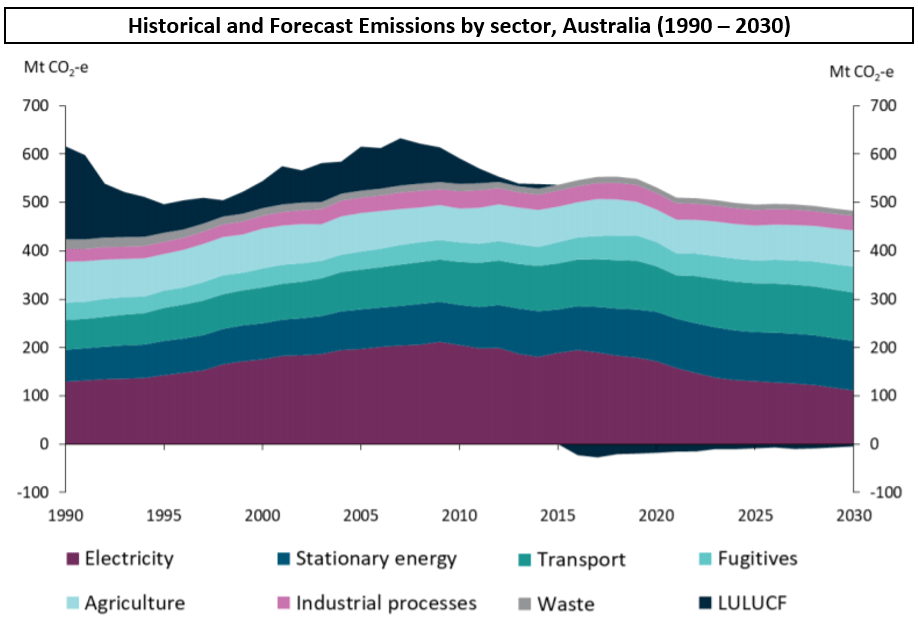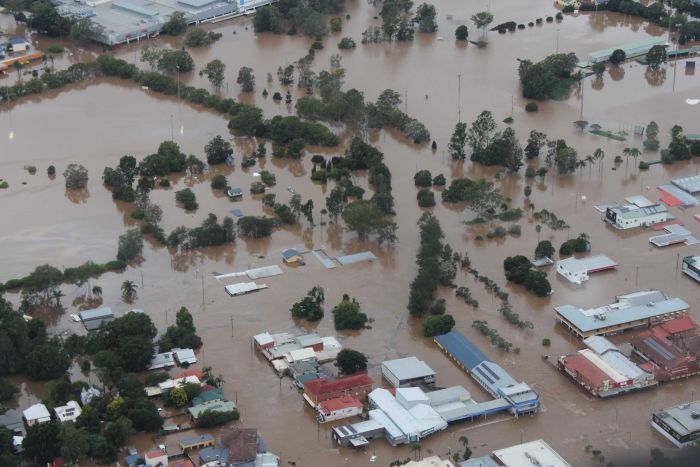The Australian Academy of Science has just released its latest report saying the world is well on the way to devastating climate change and global commitments made in the Paris Agreement are totally inadequate for turning that around.
Australia’s commitment was 26-28% reduction in emissions from 2005 levels by 2030. Cuts need to be at least 50% by then.
Neither of the major parties will (re-)introduce a carbon tax but that’s what’s needed to bring emissions down. Electricity emissions have decreased slightly since 2010 but transport and stationary energy emissions have substantially increased since 1990.

Emissions must be tackled across all sectors. It will require serious planning, pathways, and progressive targets over the next decade.
Here’s our plan for a decade of action on climate with four key steps:
- Be honest. Declare a climate emergency
- Commit to reducing emissions by at least 50% by 2030 and develop pathways for this and for net-zero emissions by 2050
- Break it down: target sectors with the biggest emission footprints – electricity, stationary energy, transport and agriculture
- Price carbon for a carbon-constrained world, starting at $30/tonne, increased in line with key trading partners
- Stop subsidising the fossil fuel industry – it’s a losing strategy
The AAS report focuses on four areas of importance to Australia’s future: our ecosystems, food production, cities and towns, and health and wellbeing.
See here for the report and below for the exec summary:
As the driest inhabited continent, Australia is highly vulnerable to the impacts of global warming. The summer bushfires of 2019–20 in a tinder-dry country, or the three severe coral bleaching events within five years that caused a loss of over 50% of hard coral cover in the shallow waters of the Great Barrier Reef, demonstrate some of the consequences of a warming planet for Australia’s people, economy and environment.
Multiple lines of evidence show that the incidence of extreme weather events will increase as the planet warms. Such events are a natural feature of the climate system, but there is strong evidence that many of them, such as heatwaves, bushfires, storms and coastal flooding, have become more frequent and intense in recent times. These extremes and their risks are likely to escalate as global temperatures continue to rise and our capacity to respond becomes compromised as the frequency increases.
The only way to reduce the risk of these unpredictable and dangerous outcomes is for a substantial reduction in the emissions of greenhouse gases into the atmosphere. Our planet’s living systems have evolved over thousands of years in a temperature range that includes relatively minor fluctuations around the long-term average. However, most cannot evolve quickly enough to accommodate the rapid increases in average temperatures we now observe and feel.
The total emission reductions currently pledged by the Australian and international governments through the United Nations Framework Convention on Climate Change Paris Agreement (UNFCCC), even if implemented on time, will translate as average global surface temperatures of 3°C or more above the pre-industrial period by 2100.
Given this situation, we must consider the vulnerability, risks and costs of Australia’s policies and strategies for responding to climate change. In particular, we need to understand the comparative risks and costs of not improving our current commitment to reducing greenhouse gas emissions.
The planet is well on the path to devastating climate change. In 2019, Australia’s warmest year on record, average surface temperatures were 1.1°C above the pre-industrial period. Australia has warmed on average by 1.4°C since national records began in 1910. Current global and Australian policies to reverse this trend are inadequate. We must plan to do better and prepare for the worst.
Predicting how Australia will change at or beyond 3°C of global warming is challenging. However, by using multiple lines of evidence, such as computer modelling of the climate system, observed changes, and historical paleoclimate studies, we can develop an understanding of future temperatures as well as where we may reach irreversible ‘tipping points’—passing thresholds that trigger sudden and accelerating changes in larger climate systems—and how to mitigate those risks.
The report synthesises the observed impacts of climate change on Australia and the risk to our future of the current global trajectory of greenhouse gas emissions. It focuses on the consequences of 3°C of global warming in the absence of greater mitigation strategies for four areas of importance to Australia’s future: our ecosystems, food production, cities and towns, and health and wellbeing. The impacts of those changes on the lives and wellbeing of Australians are discussed in detail.

